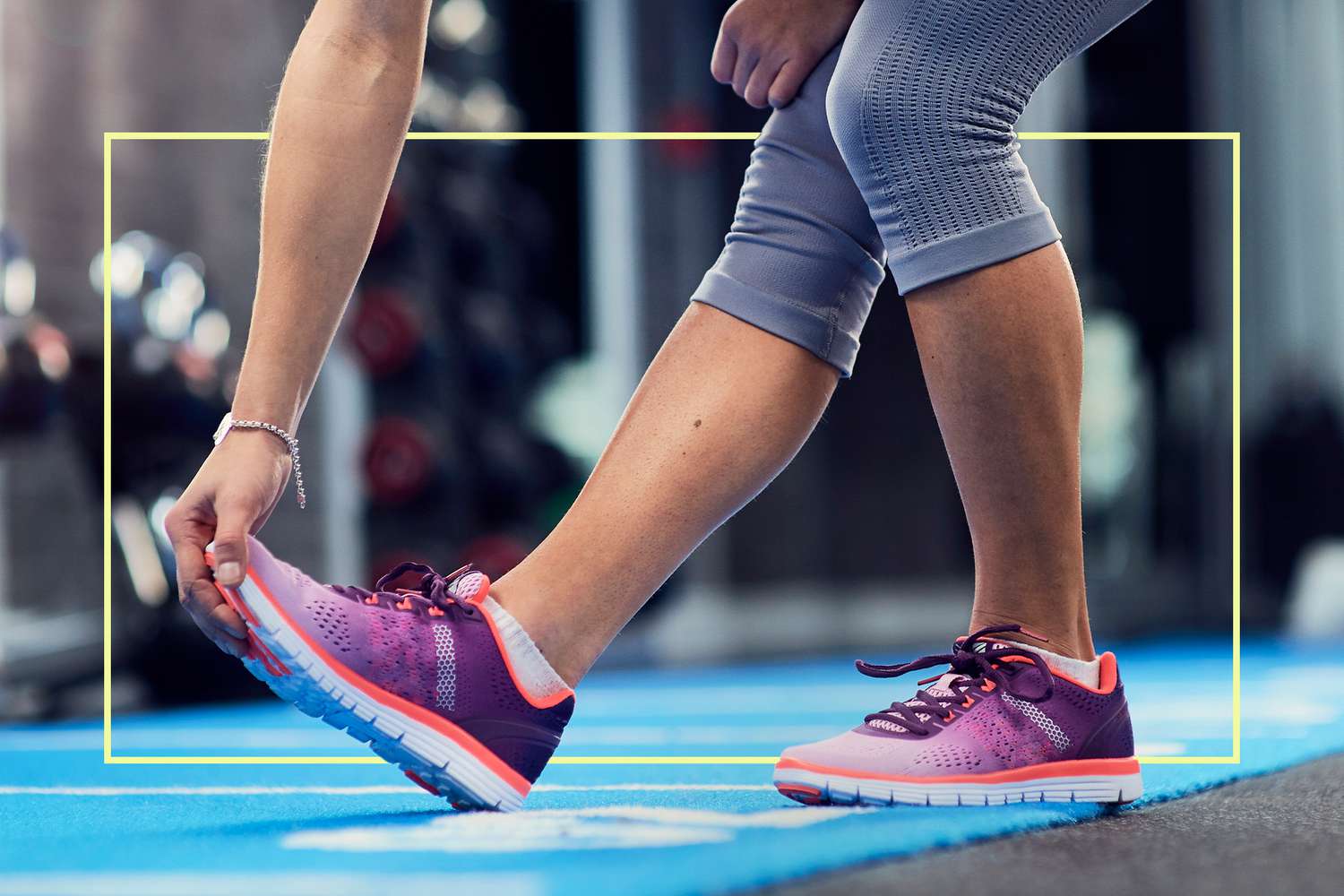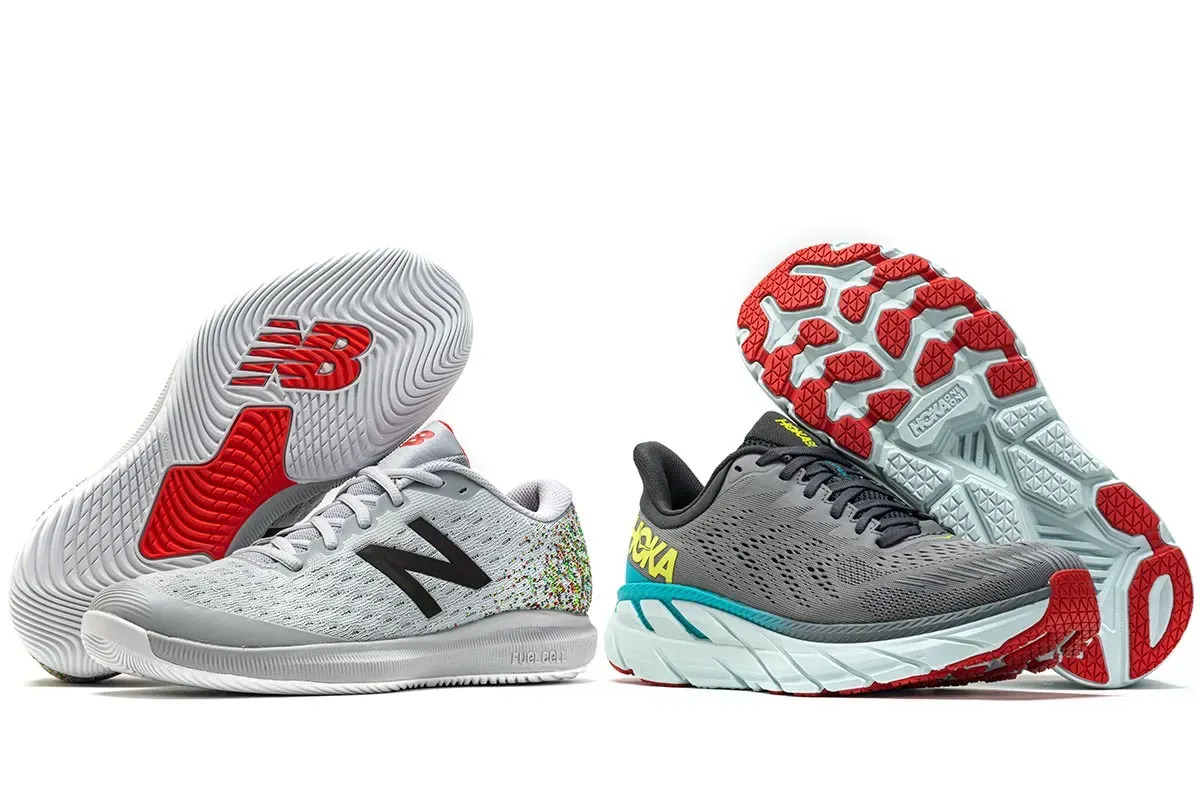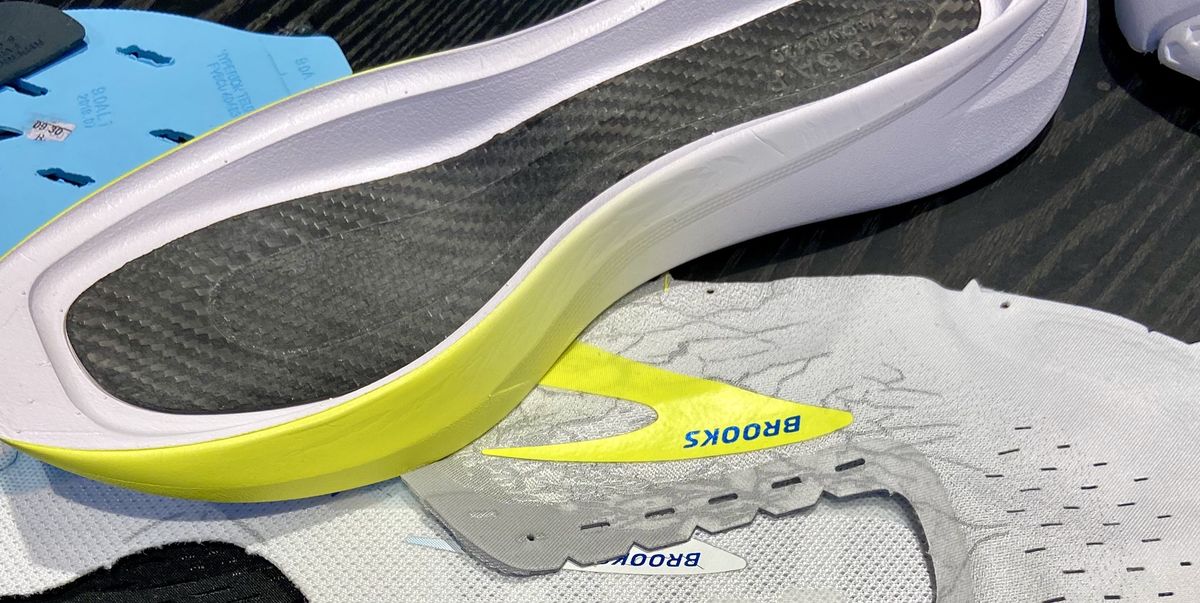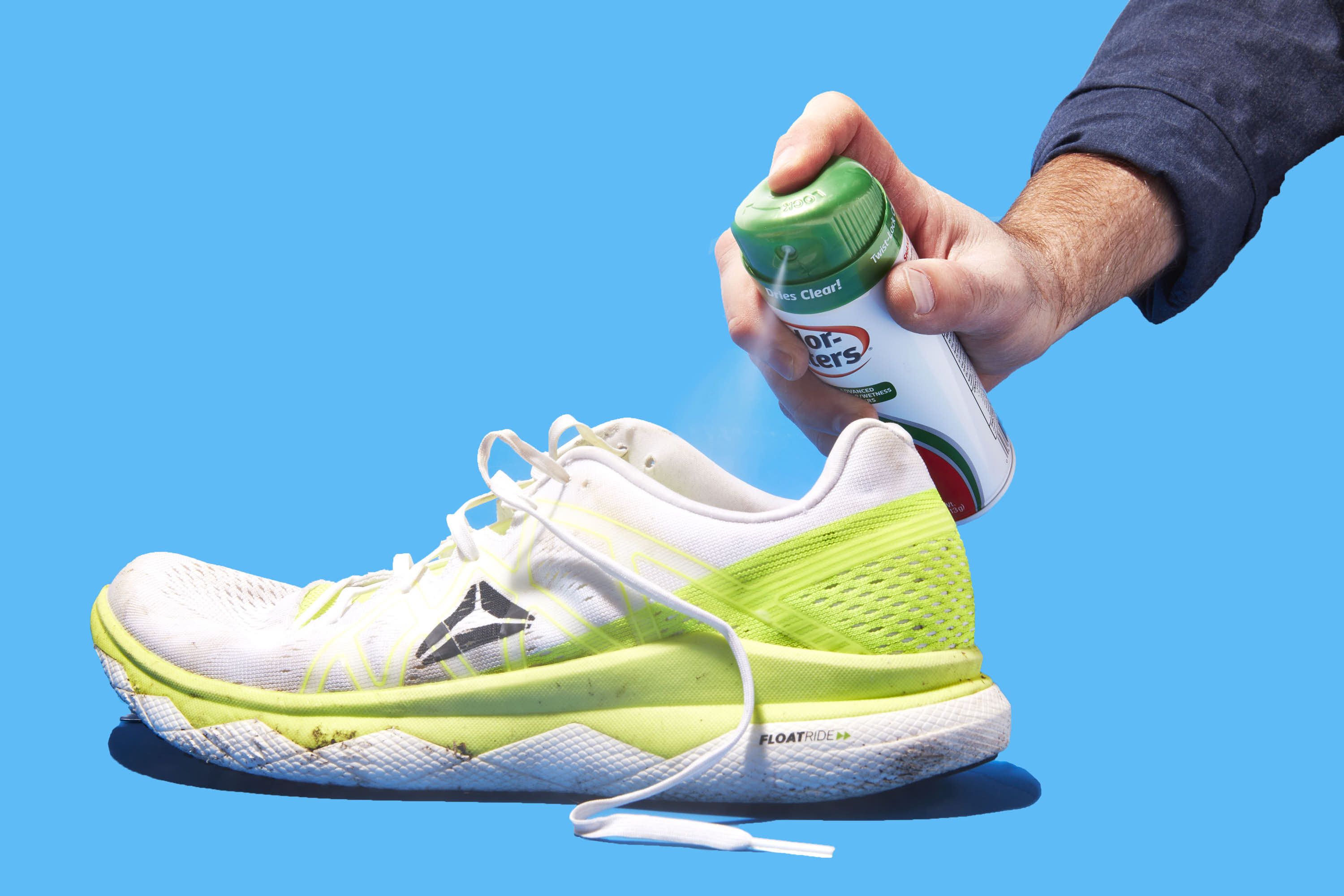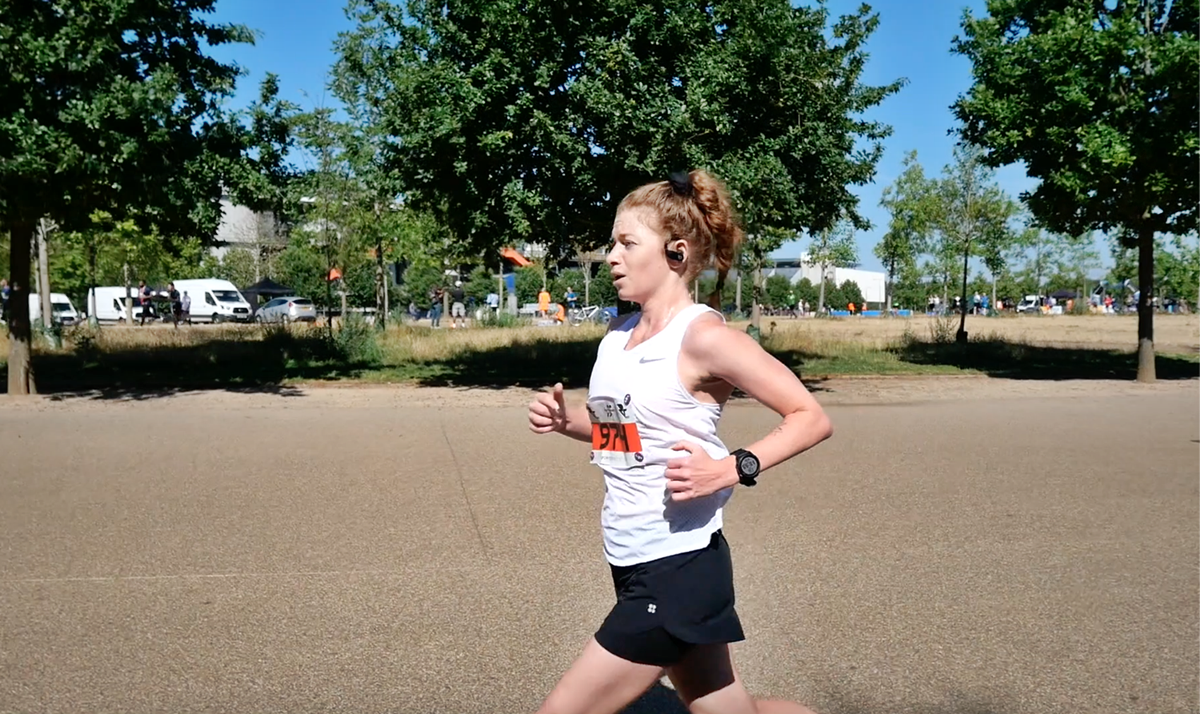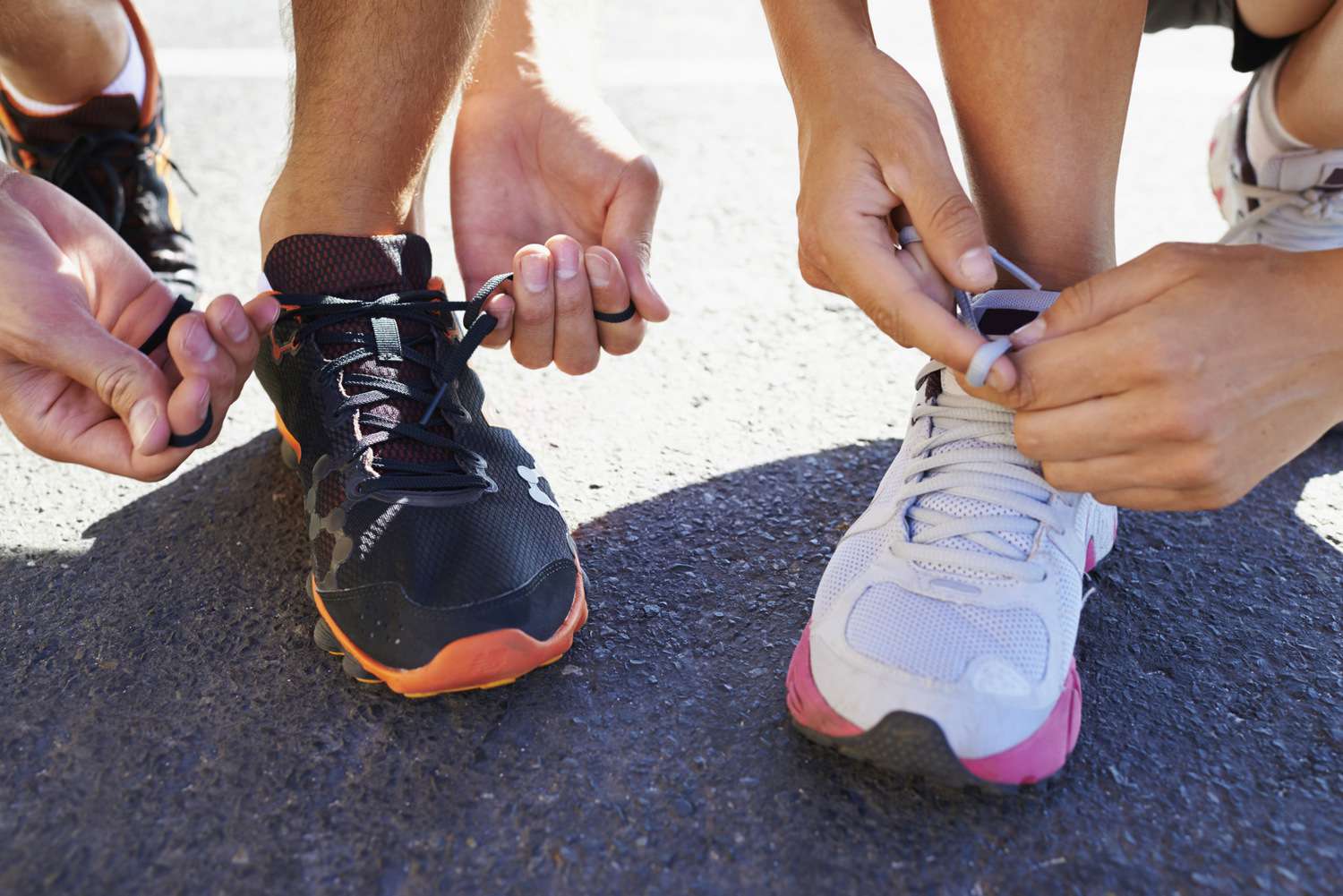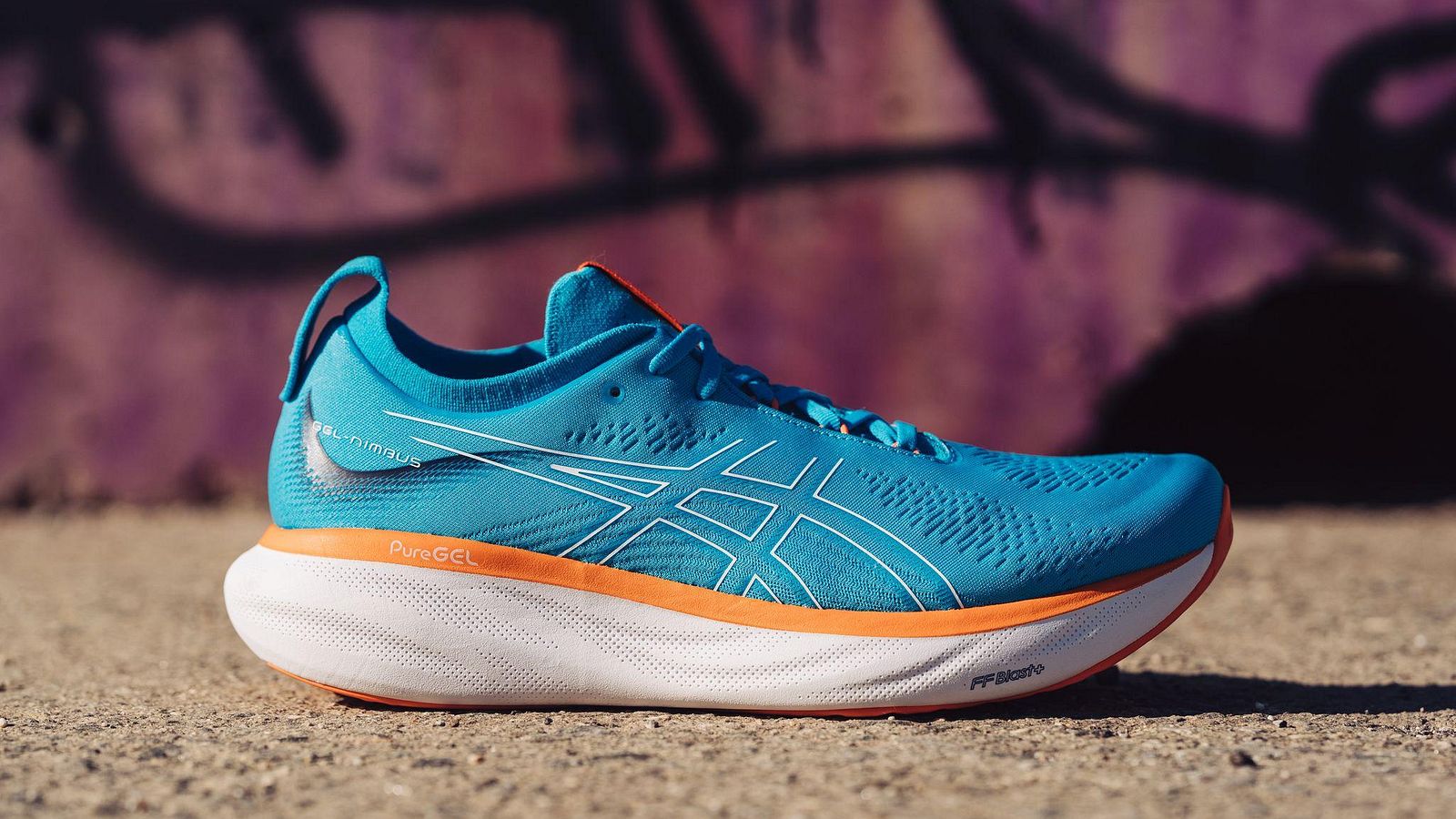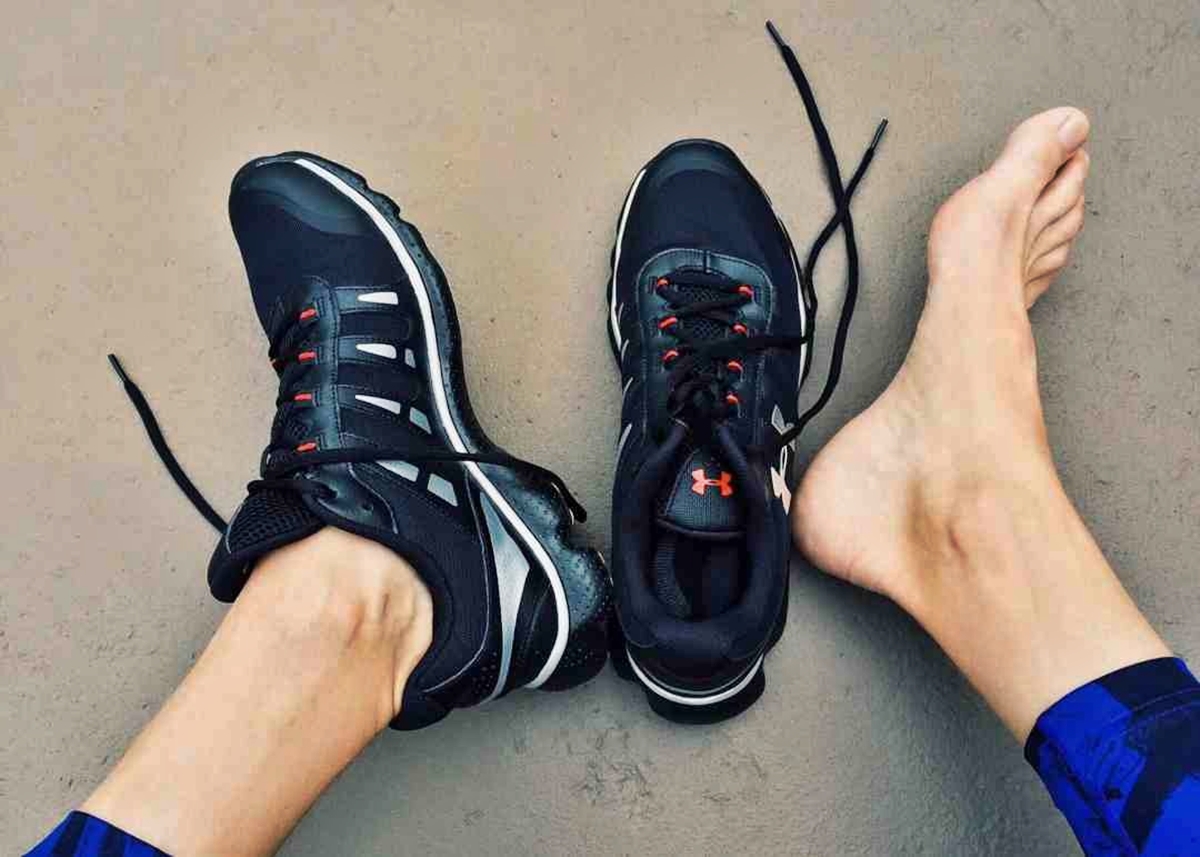Home>Misc>Featured>How To Prevent Heel Wearing Running Shoes
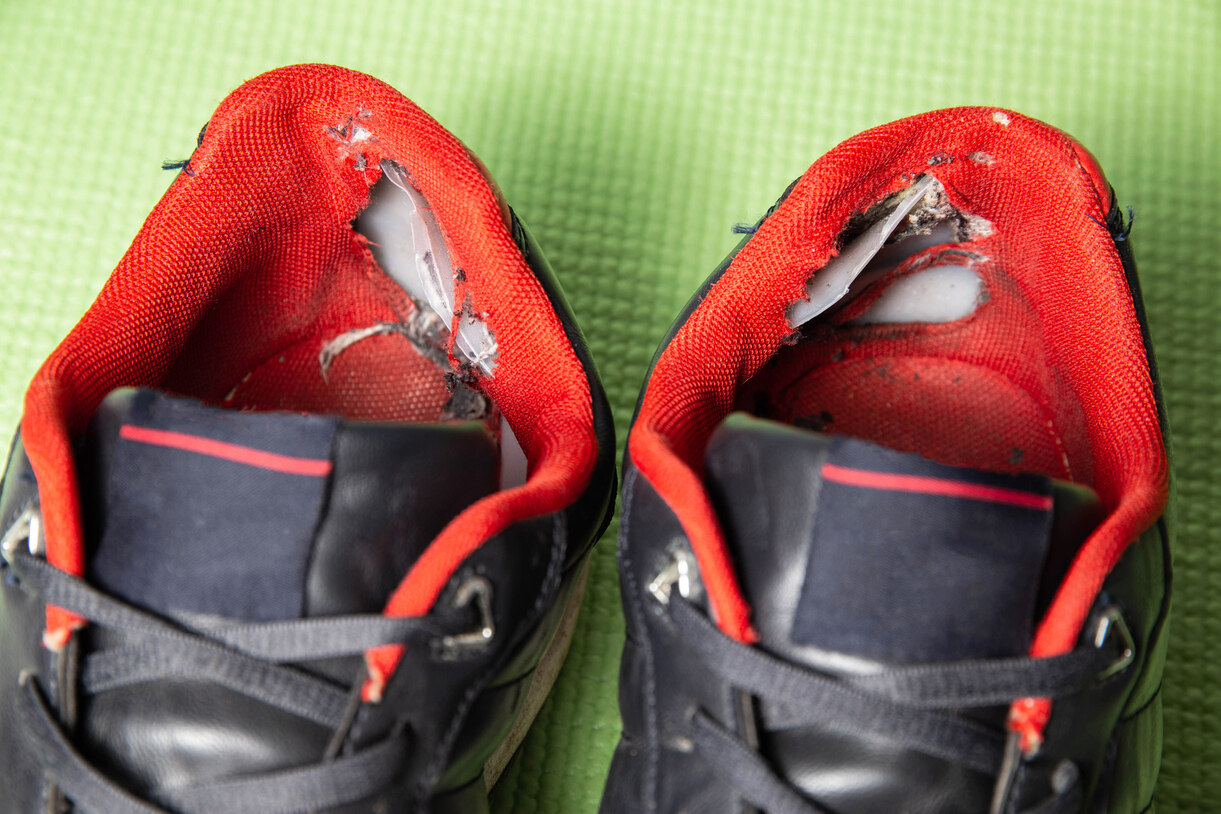

Featured
How To Prevent Heel Wearing Running Shoes
Modified: October 25, 2023
Looking for the best running shoes to avoid heel discomfort? Discover our featured collection of heel-wearing running shoes designed for ultimate comfort and support.
Introduction
Welcome to the world of running shoes, where comfort and performance converge. As a runner, you know the importance of finding the right pair of shoes that provide optimal support and cushioning. However, one common trend in the running shoe market has been the popularity of heel-wearing designs.
Heel-wearing running shoes are designed with a raised heel, typically with extra cushioning in the back of the shoe. They are marketed to provide a variety of benefits, such as improved shock absorption and stability. However, recent research has shown that these types of shoes may not be as beneficial as once believed.
Many avid runners are now considering the switch to flat running shoes, which have a lower heel-to-toe drop and offer a more natural foot strike. In this article, we will explore why you may want to stop wearing heel running shoes, the common injuries associated with them, the benefits of flat running shoes, and how to make a smooth transition from heel-wearing to flat running shoes.
By the end of this article, you will have a better understanding of why making the switch to flat running shoes may be a game-changer for your running performance and overall foot health.
Why Stop Wearing Heel Running Shoes?
Heel-wearing running shoes have been a popular choice among runners for several years, but recent research suggests that they may not be the best option for everyone. Here are some reasons why you may want to reconsider wearing heel running shoes:
- Increased Risk of Injuries: Heel running shoes can alter your running gait, leading to an unnatural heel strike. The elevated heel encourages a heel-first landing, which can increase the impact on your joints and potentially lead to injuries like shin splints, runner’s knee, and stress fractures.
- Decreased Foot and Ankle Stability: The raised heel in traditional running shoes can hinder the natural movement of your foot and ankle. This can weaken the muscles, tendons, and ligaments in your lower extremities and potentially lead to instability and balance issues.
- Limited Ankle Mobility: Heel running shoes restrict the full range of motion of your ankle joint, which is essential for a natural and efficient running stride. Reduced ankle mobility can cause compensatory movements and put excessive stress on other muscles and joints.
- Dependency on Cushioning: Heel-wearing shoes often have thicker cushioning in the heel area, which can lead to a reliance on external support. Over time, this can weaken the intrinsic muscles of your feet, reducing their ability to absorb shock and increasing the risk of injury.
- Impaired Proprioception: Proprioception refers to the ability to sense the position and movement of your body parts. Heel running shoes can dull your proprioceptive feedback, making it more challenging to maintain proper running form and react to changes in terrain.
While heel running shoes may work well for some individuals, it is essential to understand the potential drawbacks and consider your unique biomechanics and running style. The next section will delve into the specific injuries commonly associated with wearing heel running shoes, further highlighting the importance of making a switch to flat running shoes.
Common Injuries Caused by Heel-Wearing Running Shoes
While running is an excellent form of exercise, wearing the wrong type of shoes can lead to a range of injuries. Here are some of the most common injuries associated with wearing heel running shoes:
- Shin Splints: Also known as medial tibial stress syndrome, shin splints are characterized by pain along the shinbone. The elevated heel in running shoes can exacerbate this condition by placing additional stress on the muscles and connective tissues in the lower leg.
- Runner’s Knee (Patellofemoral Pain Syndrome): This injury is characterized by knee pain, typically felt around or behind the kneecap. Heel running shoes can alter the alignment of the leg, leading to misalignment and increased stress on the patella.
- Achilles Tendinitis: The elevated heel in running shoes can cause the Achilles tendon, which connects the calf muscles to the heel bone, to become overstretched and inflamed. This can lead to pain and discomfort in the back of the ankle and lower leg.
- Stress Fractures: These are small cracks or fissures in the bones, often caused by repetitive stress. The unnatural motion and increased impact from wearing heel running shoes can put excessive strain on the bones, increasing the risk of stress fractures, particularly in the feet and shins.
- Plantar Fasciitis: This condition involves inflammation of the plantar fascia, a thick band of tissue that runs along the bottom of the foot. The elevated heel can cause an unnatural stretching of the plantar fascia, leading to pain and discomfort in the heel or arch of the foot.
These injuries can be frustrating and may sideline you from running for an extended period. Switching to flat running shoes can help alleviate the stress and strain on your muscles, tendons, and bones, reducing the risk of these common injuries. In the next section, we will explore the benefits of transitioning to flat running shoes.
Benefits of Switching to Flat Running Shoes
Transitioning from heel-wearing running shoes to flat running shoes can have numerous benefits for your running performance, biomechanics, and overall foot health. Here are some advantages of making the switch:
- Natural Foot Strike: Flat running shoes have a lower heel-to-toe drop, which promotes a more natural foot strike. By landing midfoot or forefoot rather than on the heel, you can distribute the impact forces more evenly throughout your lower extremities, reducing the strain on your joints and reducing the risk of injuries.
- Improved Muscle Strength and Stability: Flat running shoes engage the intrinsic muscles of your feet and lower legs more effectively. With a lower heel, your muscles work harder to stabilize your foot and ankle, leading to increased strength, mobility, and stability over time.
- Enhanced Proprioceptive Feedback: Wearing flat running shoes allows your feet to have better contact with the ground, which promotes improved proprioceptive feedback. This heightened awareness helps you maintain better balance, adjust your running form, and adapt to various terrains more effectively.
- Increased Ankle Mobility: Flat running shoes encourage a more natural range of ankle motion, enabling your joints to move freely and flexibly. This increased ankle mobility can help you achieve a more efficient running stride and reduce the risk of compensatory movements and related injuries.
- Improved Performance: By promoting a more efficient foot strike and engaging the muscles of your feet and lower legs, flat running shoes can enhance your running performance. You may experience better running economy, increased speed, and improved endurance.
While the benefits of flat running shoes are significant, it’s important to note that transitioning to flat shoes should be done gradually to allow your body to adapt to the change. The next section will provide some helpful exercises and tips for a smooth transition to flat running shoes.
How to Transition to Flat Running Shoes
Transitioning from heel-wearing running shoes to flat running shoes should be done gradually to allow your body to adjust to the changes in foot strike and muscle engagement. Here are some steps to help you make a smooth transition:
- Start Slowly: Begin by incorporating short runs in your flat running shoes into your training routine. Start with shorter distances and gradually increase the duration and intensity of your runs over time.
- Progressive Increase: Increase the time spent in flat running shoes gradually, allowing your muscles and connective tissues to adapt. Avoid jumping straight into long-distance runs or intense training sessions to prevent overuse injuries.
- Mix Shoe Types: Initially, consider alternating between your heel running shoes and flat running shoes to gradually introduce the change. This allows your body to acclimate and reduces the risk of sudden strain on your muscles and joints.
- Focus on Form: Pay attention to your running form and mechanics throughout the transition process. Aim for a midfoot or forefoot strike and ensure that your feet are landing directly under your body for optimal efficiency and reduced impact.
- Listen to Your Body: It’s crucial to listen to your body’s signals during the transition. If you experience excessive discomfort or pain that persists, consider scaling back on your mileage or consulting with a healthcare professional.
- Patience and Persistence: Be patient with yourself as you adjust to the new running style. It may take time for your muscles and joints to adapt fully. Stay consistent with your training and trust the process.
Remember, every runner is different, and the transition may vary from person to person. The key is to gradually introduce the change, listen to your body, and prioritize proper form and technique. In the next section, we will explore some strengthening exercises to help prepare your feet and lower legs during the transition process.
Strengthening Exercises for Transitioning
As you transition from heel-wearing running shoes to flat running shoes, it’s essential to strengthen the muscles and tendons in your feet and lower legs to support the new running style. Here are some exercises that can help prepare your body for the transition:
- Calf Raises: Stand on the edge of a step or raised surface with your heels hanging off. Raise your heels as high as possible, then lower them below the step. Repeat for several sets to strengthen your calf muscles.
- Toe Scrunches: While sitting or standing, lift and curl your toes, as if you are trying to pick up a small towel or object with your toes. Hold the scrunch for a few seconds before releasing. Repeat for several sets to strengthen the muscles in your feet.
- Ankle Alphabet: Sit on a chair with one leg extended in front of you. Flex your ankle and use your foot to “draw” each letter of the alphabet in the air. Repeat with the other foot. This exercise helps improve ankle mobility and stability.
- Single-Leg Stance: Stand on one leg and try to maintain your balance for as long as possible. Focus on keeping your core engaged and your foot muscles activated. Gradually increase the duration of each stance to improve stability and strength.
- Achilles Stretch: Stand facing a wall and place one foot behind you, keeping it straight. Lean forward, keeping your back leg straight and your heel on the ground, until you feel a stretch in your Achilles tendon and calf. Hold for 20-30 seconds and repeat on the other side.
- Arch Strengthening: Place a small towel on the floor and use your foot to scrunch and gather it towards you. Then, spread your toes and try to stretch the towel out. Repeat for several sets to strengthen the muscles in your arches.
Incorporate these exercises into your regular training routine to build strength and stability in the muscles and tendons necessary for flat running shoes. Remember to perform them in a pain-free range of motion and consult with a healthcare professional if you have any concerns or pre-existing conditions.
In the next section, we will provide some tips to help you find the right pair of flat running shoes for your needs.
Tips for Finding the Right Flat Running Shoes
When transitioning to flat running shoes, it’s crucial to find a pair that provides the right fit, support, and comfort for your feet. Here are some tips to help you find the perfect pair:
- Visit a Specialty Running Store: Consider visiting a specialty running store where knowledgeable staff can assess your gait, foot type, and running needs. They can guide you in selecting the right flat running shoes for your specific requirements.
- Get Proper Sizing: Ensure that your flat running shoes are the correct size, with enough room in the toe box for your toes to move freely. Your shoes should fit snugly but not feel tight or constricting.
- Assess Arch Support: Determine whether you need additional arch support based on your foot type. Flat feet may require shoes with built-in arch support, while higher arches may benefit from neutral shoes or those with customizable inserts.
- Consider Flexibility: Look for flat running shoes that offer some flexibility in the sole, allowing your foot to move naturally. This flexibility aids in promoting proper foot mechanics and a smooth transition to a midfoot or forefoot strike.
- Test Them Out: Take your potential flat running shoes for a test run. Most specialty stores have a treadmill or an area where you can try them out to assess their comfort, cushioning, and overall feel.
- Gradually Introduce: Once you’ve found the right flat running shoes, introduce them gradually into your running routine. Start with shorter runs to allow your feet and muscles to adapt to the new shoe design and feel.
- Monitor Your Comfort: Pay attention to how your feet and lower legs feel during and after your runs. If you experience excessive discomfort, pain, or any unusual sensations, reassess the fit or consult with a professional for further guidance.
Remember that finding the right pair of flat running shoes is a personal process. What works for someone else may not necessarily work for you. Take the time to try different options and prioritize your comfort, support, and overall running experience.
Now that you have a better understanding of the benefits of flat running shoes, the transition process, strengthening exercises, and tips for finding the right pair, you are ready to embark on your journey towards a more natural and efficient running style. Lace up those flat running shoes, hit the road, and enjoy the countless benefits they offer!
Conclusion
Transitioning from heel-wearing running shoes to flat running shoes offers numerous benefits for runners of all levels. The switch can help reduce the risk of common injuries associated with heel running shoes and improve your overall running performance. By promoting a more natural foot strike, engaging the muscles in your feet and lower legs, and providing enhanced proprioceptive feedback, flat running shoes can enhance your running experience and support your foot health.
During the transition, it’s important to take it slow and gradually introduce the change to allow your body to adapt. Incorporating strengthening exercises for your feet and lower legs can help prepare your muscles for the new running style. Additionally, finding the right pair of flat running shoes that fit properly and meet your needs is crucial.
Remember that the transition to flat running shoes is a personal journey. It may take time for your body to adjust, and everyone’s experience may differ. Pay attention to your body’s signals, listen to your comfort level, and consult with professionals if needed.
So lace up those flat running shoes, hit the road, and experience the joy and benefits of a more natural and efficient running stride. Stay consistent, be patient, and enjoy the journey towards improved running performance and foot health!
